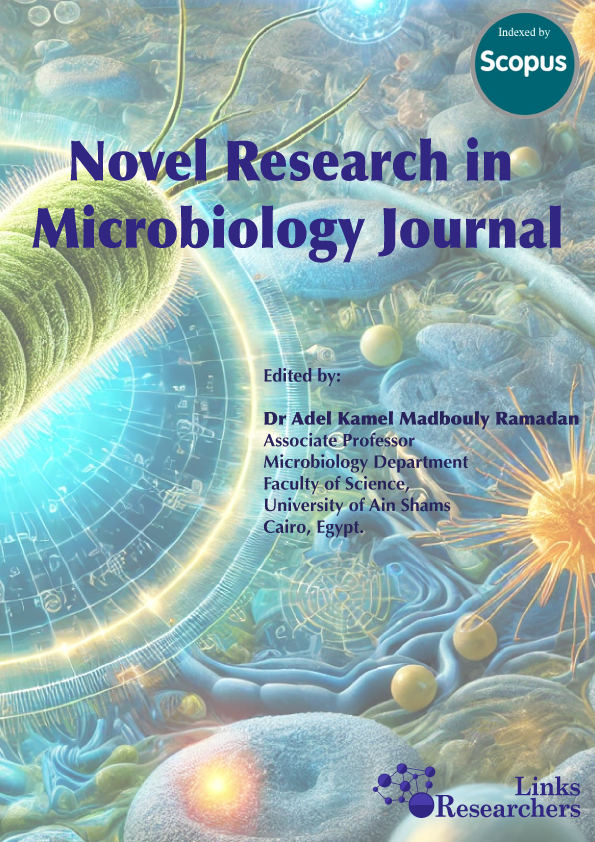Extracellular biosynthesis of silver nanoparticles using Bacillus subtilis and their antibacterial activity against clinical bacterial species
Novel Research in Microbiology Journal (2021), 5(3): 1256-1268
Extracellular biosynthesis of silver nanoparticles using Bacillus subtilis and their antibacterial activity against clinical bacterial species
Nouran H. Assar1*; Aya allah T. Mohamed2,3; Rehab M. Abd El-Baky2,3; Reham Ali Ibrahem2
ABSTRACT
The aims of this study were to biosynthesize silver nanoparticles (AgNPs) using Bacillus subtilis supernatant, and to evaluate their in vitro antibacterial potential against human pathogens; namely Staphylococcus aureus (Staph. aureus) and Escherichia coli (E. coli). Nanoparticles (NPs) are becoming popular in different fields of research, and are useful in combating vast number of microbial diseases. NPs may be artificially synthesized in vitro using chemical methods andor via extracellular metabolites produced by the bacterial strains. In the present study, biosynthesis of AgNPs was carried out in vitro using supernatants of B. subtilis. Biosynthesized AgNPs were characterized through several physical methods. The recorded Z-average (d. nm) was 135.0 nm; with 99.2 % of the NPs displaying a hydrodynamic distance across of 188.0 nm (SD= 117.7). The polydispersity index was 0.246 and the Zeta- potential value was - 17.2 mV, which indicates good colloidal stability. Results of the Transmission electron microscope (TEM) observation indicated that the particles were spherical in shape with an average size of 21.8- 27.5 nm. The antibacterial efficacy of the AgNPs against Methicillin resistant Staph. aureus (MRSA) and E. coli clinical isolates was evaluated in vitro using the agar well diffusion. The AgNPs demonstrated antibacterial potential against MRSA and E. coli isolates; recording 18 and 15 mm diameter of zones of inhibition, respectively. The minimum inhibitory concentration (MIC) was found to be 142 μg/ ml, while the recorded minimum bactericidal concentration (MBC) was 284 μg/ ml. The mode of action of the AgNPs was investigated using the Scanning electron microscope (SEM), which was recognized as bacterial cell lysis and elongation. Current data suggest an efficient biosynthesis of stable AgNPs by B. subtilis with remarkable antibacterial potential.
To share on other social networks, click on any share button. What are these?






